
To design an efficient packaging line, you must build a system that works for your unique products, space, and goals.
Every manufacturer faces different challenges. Maybe your facility has tight floor space. Maybe you produce short-run batches across multiple SKUs. Or maybe your current system just can’t keep up with demand.
The reality is, there’s no one-size-fits-all approach to packaging. But with careful planning and the right equipment, you can create custom packaging solutions that are streamlined, scalable, and built to grow with your business.
Let’s walk through the five key steps to designing a packaging line that fits your needs, whether you're upgrading an existing setup or starting from scratch.
Step 1: Define Your Packaging Requirements
Before you start sourcing equipment, you need to understand what you're packaging and how.
Start by identifying the characteristics of your product:
- Is it liquid, solid, or semi-solid?
- Is the packaging fragile or rigid?
- What shape and size are the containers?
Next, determine your target production volume and line speed. Do you need to run high-speed continuous lines, or will you have smaller batch runs that change frequently?

Finally, consider compliance and labeling needs. Food and beverage products must meet FDA or USDA requirements. However, cosmetics may require tamper-evident features. Every packaging decision should support regulatory goals and brand presentation.
Knowing these details upfront will help you make smarter decisions about layout, equipment type, and automation levels.
Step 2: Assess Your Available Space and Layout
Space is one of the most overlooked constraints in custom packaging solutions. Mapping out your available floor space ensures your line can operate efficiently and safely.
Here’s what to consider:
- Workflow efficiency: Position equipment to reduce unnecessary product movement or manual handoffs. A streamlined layout minimizes delays and helps maintain a steady flow from start to finish.
- Operator access: Leave enough room for staff to clean, maintain, and operate equipment without bottlenecks. Easy access to controls, materials, and service points reduces downtime and improves safety.
- Scalability: Design your layout with future expansion in mind. That means leaving open space for new systems or upgrades down the line, so your line can grow as your production needs evolve.
Even if your facility is small, smart layout planning can make a big impact on line performance—and help you avoid costly redesigns later.
Step 3: Select the Right Packaging Equipment
Once your requirements and layout are clear, it’s time to choose the equipment that brings your line to life.

Your setup may include:
Labeling Equipment: Ensure products are accurately and consistently labeled, meeting both branding and compliance standards. Automated labeling improves presentation, reduces human error, and keeps your line audit-ready.
Filling Equipment: Provide precise dispensing for liquids, powders, and solids, reducing waste and ensuring quality. The right filler increases portion accuracy, speeds up production, and helps maintain consistent product weights for customer satisfaction and regulatory compliance.
Capping Equipment: Secure containers reliably, preserving product integrity and preventing contamination. Automated capping systems apply consistent torque and placement, reducing leaks, rework, and customer complaints.
Conveyor Systems: Keep the entire line moving efficiently, connecting each step in your process. Well-designed conveyors ensure steady product flow, reduce manual handling, and help synchronize operations across multiple systems.
Denesters: Automate repetitive tasks like container separation, reducing labor costs and improving consistency. By automatically dispensing trays or containers onto the line, denesters support hygiene standards and free up operators for higher-value tasks.
When choosing custom packaging solutions, think about your automation level. A semi-automated line offers more flexibility and a lower upfront investment. A fully automated system can deliver higher speed and consistency, which is ideal for high-volume environments.
The key is matching your equipment to your business model, production goals, and budget, not the other way around.
Step 4: Integrate and Optimize Workflow Efficiency
Even the best equipment won’t deliver results if they don’t work well together. Integration is the secret to keeping your line running smoothly and avoiding costly inefficiencies.

Ensure equipment is properly timed and synchronized to avoid slowdowns or backups. A misaligned system can create bottlenecks that affect the entire line’s performance.
Balance speed, accuracy, and quality control across all stages of packaging. Each system should complement the next in terms of pace and functionality to maintain a consistent flow.
Look for ways to reduce manual handling, which can lead to inconsistencies, injuries, or downtime. The less your team needs to intervene between steps, the more efficient and safer your line becomes.
Automating transitions between systems—like having denesters feed directly into fillers, then onto cappers and labelers—helps maintain a steady rhythm that minimizes errors and keeps production flowing. It also opens the door for real-time monitoring and adjustments, ensuring you can react quickly to any issues without shutting down the entire line.
When your line works as one cohesive system, you gain speed, predictability, consistency, and peace of mind.
Step 5: Plan for Scalability and Future Growth
If you’re investing in new equipment, make sure it can evolve with your business. That means choosing:

- Modular equipment that allows for upgrades or configuration changes. Modular systems let you add new capabilities—like additional labeling heads or inspection units—without replacing your core setup.
- Flexible systems that can accommodate new product sizes, shapes, or SKUs. As your offerings expand, your equipment should be able to adjust quickly to avoid production delays.
- Partners who can support your growth with consultation, service, and scalable solutions. Working with an experienced provider ensures you have a long-term resource to guide decisions and troubleshoot challenges as your operation grows.
Your production needs may double. Your product offerings may diversify. Building flexibility into your packaging line now helps you stay competitive and cost-effective, avoiding the need for a full system overhaul later on.
Planning for growth doesn’t just protect your investment—it positions your operation to respond quickly to market demand, new contracts, or evolving regulations.
Build a Line That Works for You
Designing custom packaging solutions is all about creating a system that supports your products, your people, and your growth.
By taking the time to understand your requirements, assess your space, select the right equipment, and plan for the future, you’ll build a line that:
- Improves efficiency
- Reduces labor and waste
- Enhances product consistency and quality
- Supports long-term scalability
At Pack Leader USA, we specialize in helping manufacturers like you design custom packaging solutions that actually work, are tailored to your goals, and are not a cookie-cutter setup.
Ready to start building your ideal packaging line? Explore our equipment or schedule a consultation today.
.webp?width=200&height=114&name=2x-Packleader-logo-large%20(1).webp)

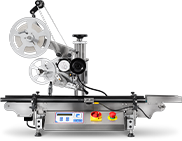
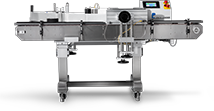
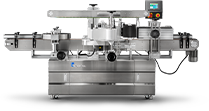
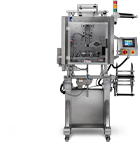
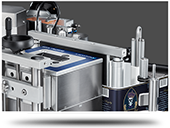
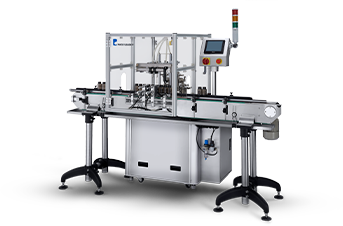

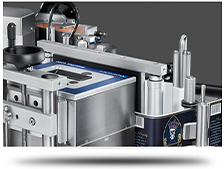





.webp?width=360&name=2x-color-logo%20(1).webp)